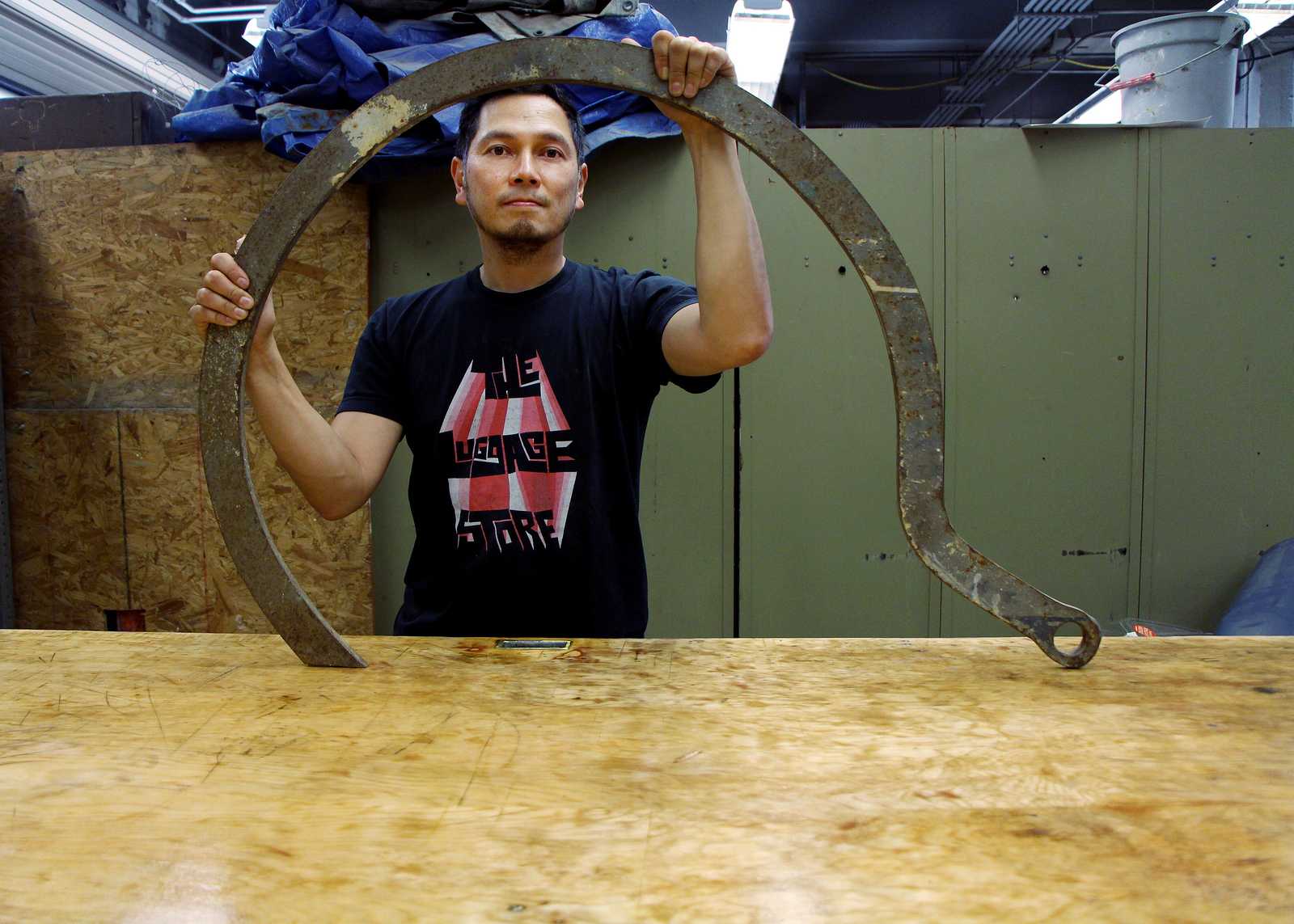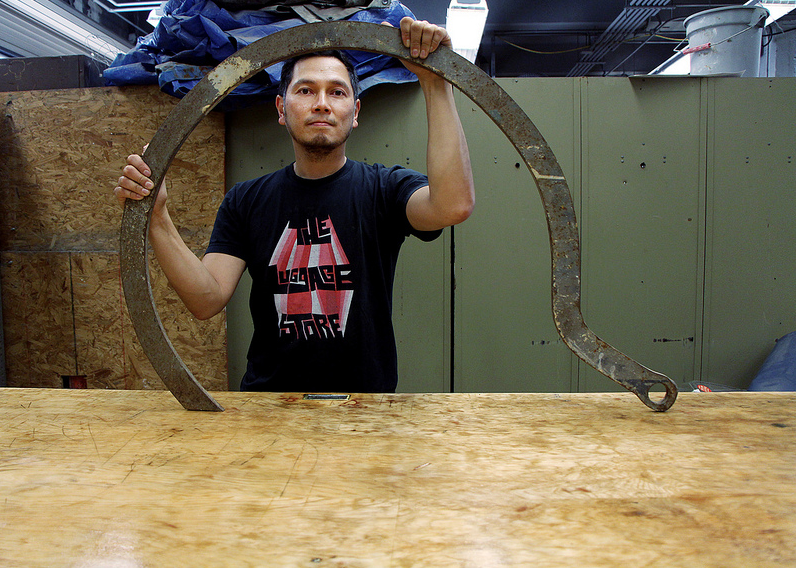
New art professor at SF State Michael Arcega exhibits his most recent work on a projected screen. Displayed is a world map molded together with pieces of canned ham once used to feed soldiers during World War II. His objective is to experiment with this form of meat as a means to create artwork.
“Our research as artists is different, it could be materials research,” said Arcega, new faculty member of the University art department. “We can pick up a piece of material like, Spam luncheon meat, and figure out how to cut and manipulate it and transform and augment it to become art work.”
Arcega was hired with a tenure track title as a professor in the art department at SF State this semester. He brings with him an extensive background in teaching art at several schools including Stanford University, Virginia Commonwealth University and at the California College of Arts. He also carries the additional prestige of being a Guggenheim fellowship winner.
“We have general guidelines that we have to hit in terms of what the curriculum is but we pretty much get there on our own way,” said Arcega. “Every art faculty member has their own strategies to get to these places and I have my own way of doing things too.”
Arcega chose to carry out research regarding Spam, because it was a World War II ration that spread throughout Asia and revolutionized how the United States fed its troops during that time.
“With the addition of Michael Arcega to the department, we move several steps closer to realizing our goal of aligning our curriculum more closely with current practices in contemporary art making,” said Gail Dawson, chair of the art department. “Students will want to work with him because of his expertise in sculpture, and the innovative ways he approaches the medium in particular and art practice in general.”
Professors on the path toward becoming tenured are assessed on their progress at a two-year, four-year and 10-year mark of them teaching at the University. The department hiring committees conduct the first two evaluations, whereas the 10-year evaluation is broadened toward the University as a whole and eventually leads toward a tenure title.
Some key examples of how teachers are assessed by committees include their progress in their respective research and their development as a teacher.
“At SF State tenure is determined by meeting established guidelines for teaching effectiveness, professional growth and achievement, and service to the department, college, University and community,” said Dawson.
The process of a candidate to obtain a tenure track title at SF State can be a strenuous process coupled with interviews that can last over the course of two days. In Arcega’s case, he applied for the position, and his strong reputation helped him advance toward a finalist from among all the other applicants.
Arcega has already made a good impression on his first batch of sculpture students with his communicative and affable teaching style.
“I like him a lot, he is very relaxed and that is a good thing,” said Oliver Lee, an exchange student from the United Kingdom who is currently enrolled in Arcega’s sculpture 1 class at SF State. “If I can, I will take more classes with him.”








